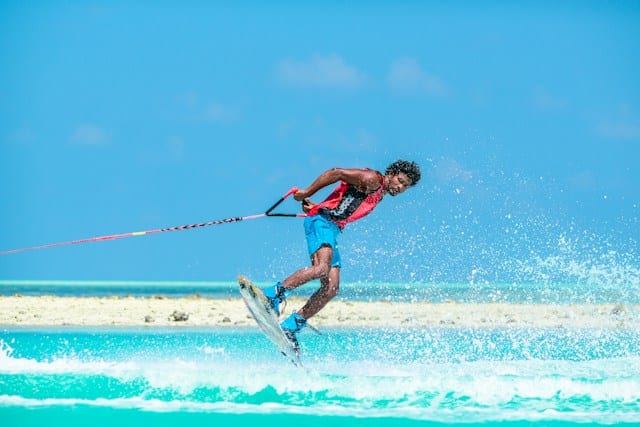Indigenous cultures have always been rich in tradition and spirituality, which is deeply rooted in the land. Many of these traditions are expressed through games and sports, which provide not only physical benefits but also contribute to the spiritual and cultural well-being of the community. In this article, we’ll delve into the cultural significance of sports and games in Indigenous societies, uncovering their role in healing, youth development, and the preservation of cultural heritage.
Lacrosse: A Divine Gift to the Native American Tribes
Lacrosse is more than just a sport for Native American tribes, it’s a spiritual practice. Originating from these tribes, Lacrosse was called “the Creator’s Game”, played to give thanks to the deity, resolve conflicts, or heal the sick. The competitive aspect of the game was secondary to the spiritual and communal bonds it fostered.
Sujet a lire : The role of sports in promoting sustainable transportation and commuting.
Traditional lacrosse games could involve hundreds of players and last for days. It wasn’t just about the physical activity of running, throwing, and catching; every element of the game had a cultural and spiritual significance. For example, the lacrosse stick represents the two most sacred animals in Haudenosaunee culture: the deer, from whose hide the pocket is made, and the turtle, whose shape the wooden frame imitates.
In contemporary society, many Native American tribes continue to play lacrosse, preserving their cultural heritage while promoting physical fitness and community cohesion.
En parallèle : The intersection of sports and architecture: designing sports facilities for the future.
The Role of Traditional Aboriginal Games in Youth Development
Aboriginal games are not merely recreational activities for children and teenagers. They serve as a crucial learning tool, helping to instill cultural values, enhance physical fitness, and foster social connections in Indigenous youth.
The traditional Aboriginal game, ‘Wana’, for example, requires precision, agility, and teamwork. The players throw a small stick, attempting to hit it with a large stick while it is still in the air. Such games help young Indigenous Australians develop dexterity and coordination, while the team-based nature of many Aboriginal games promotes cooperation and communication skills.
Google Scholar offers numerous studies highlighting the positive impact of these traditional games on Indigenous youth. They provide a unique framework for teaching Indigenous history, language, and customs while also promoting physical health and social skills.
Sports: A Bridge Towards Cultural Understanding in Canada
Sport has the power to bring people together, irrespective of their cultural or ethnic backgrounds. In Canada, this power has been harnessed to create a bridge between settler and Indigenous communities, promoting cultural understanding and reconciliation.
The Canadian government’s ‘Sport for Social Development in Indigenous Communities’ (SSDIC) initiative, implemented by the Department of Indigenous Services Canada (DISC), exemplifies this. The program supports Indigenous communities in developing sport and physical activity programs that align with their cultural practices and values. Lacrosse, for instance, has been reintroduced in many Indigenous communities and schools across Canada as part of this initiative.
This approach has had two significant benefits: it has enabled Indigenous youth to reconnect with their cultural heritage, and it has increased understanding and respect for Indigenous culture among non-Indigenous Canadians.
The DOI’s Efforts in Preserving Indigenous Traditional Games
The Department of the Interior (DOI), through the Bureau of Indian Education (BIE), has also made significant efforts to preserve and promote traditional Indigenous games in the United States. They recognize that these games are not only a part of Indigenous cultural heritage but also a vital component of holistic education.
The BIE oversees educational programs for Native American youth that incorporate traditional games and sports as part of the curriculum. These games are used to teach everything from mathematics to social studies, in a context that is culturally relevant and engaging for students.
For instance, students may learn about probability through traditional hand games or study the history of their tribe through the practice of traditional sports. This approach not only makes learning more engaging but also helps to bridge the gap between traditional cultural practices and modern education.
The Spiritual Significance of Land-Based Activities
The understanding of the land as a living entity pervades the spirituality of Indigenous cultures. Land-based activities, including sports and games, are vital methods through which Indigenous people connect with this spiritual element.
Participation in these activities encourages a deep respect for the land and its creatures. It teaches humility, patience, and resilience, echoing the Indigenous belief that humans are just one part of a larger interconnected web of life.
For Indigenous cultures, participating in land-based sports and games is a form of spiritual practice, a way to connect with the deities and the ancestors. It’s a tangible link to the past, a way of learning from the teachings of the ancestors and carrying them forward into the future.
This spiritual connection to the land also promotes healing. Engaging in these activities can provide a form of therapy, helping to alleviate the effects of trauma and loss experienced by many Indigenous communities. They serve as a vital tool for mental and emotional healing, reinforcing the sense of belonging and identity, and fostering resilience and empowerment.
In the end, the role of sports in Indigenous cultures transcends the realm of physical activity. It’s about community, spirituality, heritage, healing, and above all, the profound connection to the land.
Indigenous Athletes and the Modern Sporting World
The presence of Indigenous athletes in modern sports has created a unique opportunity for the representation and celebration of Indigenous cultures. These athletes often carry more than just their personal ambitions into their chosen sports; they embody the rich cultural heritage, history, and spirit of their communities.
A notable example is Kyrie Irving, a professional basketball player in the National Basketball Association (NBA). Irving, who has Native American heritage, has used his platform to raise awareness about Indigenous issues, including the importance of recognizing Indigenous cultures and traditions. In 2018, he was officially welcomed into the Standing Rock Sioux Tribe, his mother’s tribe.
Indigenous athletes, like Irving, playing in mainstream sports have not only attained personal achievements but have also brought their cultures to the forefront. Their distinctive cultural identities and traditions, expressed through their sportsmanship, often challenge the stereotypes about Indigenous peoples. This can contribute to broader societal changes by fostering respect and understanding for Indigenous cultures among diverse audiences.
Moreover, the success of Indigenous athletes has sparked inspiration among Indigenous youth, urging them to pursue their dreams in the sporting world while staying connected to their cultural roots.
Conclusion: The Transformative Power of Indigenous Sport and Games
The cultural significance of sports and games in Indigenous societies cannot be overstated. They are not simply forms of physical activity or pastimes. They are complex social phenomena that serve multiple purposes, from the spiritual to the educational, and the therapeutic.
These traditional games not only offer a window into the rich cultural heritage of the Indigenous communities but also serve as a bridge between the past and the present, the old and the new, traditional knowledge and modern education. They play a crucial role in shaping the identity of Indigenous youth, instilling in them the values, norms, and beliefs of their culture.
Furthermore, they symbolize the resilience and vitality of Indigenous cultures in the face of external pressures and challenges. The continued practice of these games, amidst the rapid changes in the world around them, is a testament to the adaptability and endurance of these cultures.
On the other hand, the rise of Indigenous athletes in the world of modern sports, and the use of sports as a means of fostering cultural understanding and reconciliation, as seen in the SSDIC initiative in Canada and the educational programs of the DOI in the United States, reveal the transformative power of sports.
They underscore the potential of sports, not just as a source of entertainment or physical activity, but as a catalyst for social change, a tool for cultural preservation, and a platform for asserting Indigenous rights and identity.
In the end, whether on the traditional fields of play or in the modern arenas, sports remain a powerful medium through which Indigenous peoples express their indomitable spirit, their vibrant cultures, and their enduring connection to the land.






